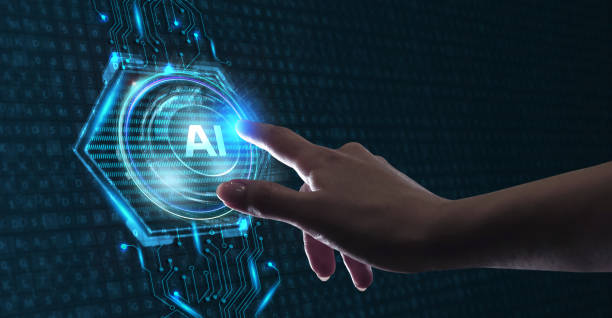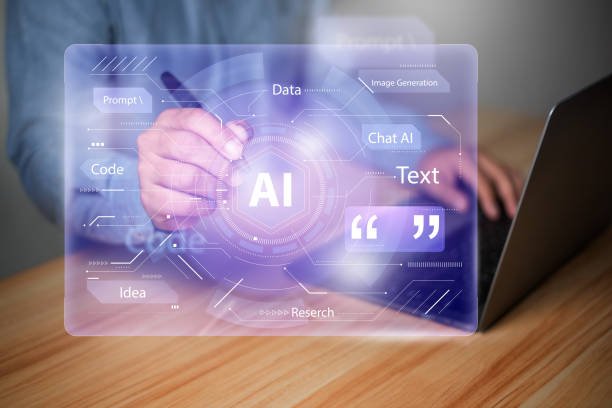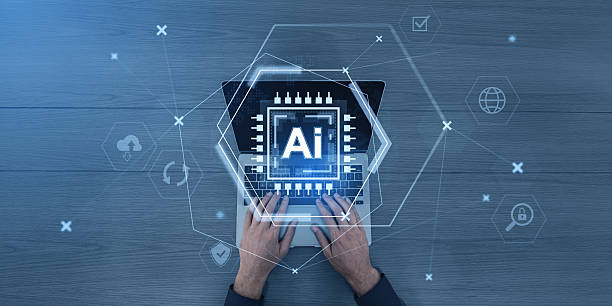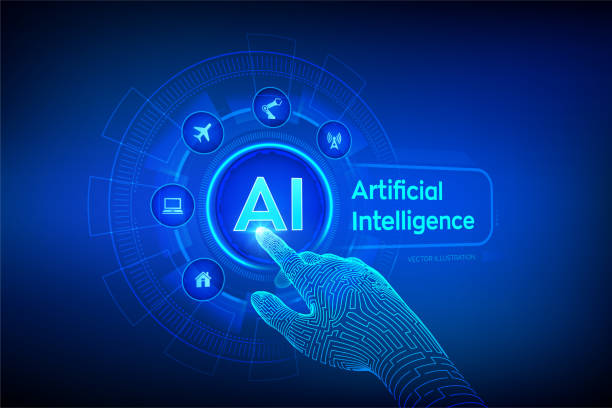What is an AI Robot and How Does it Work?
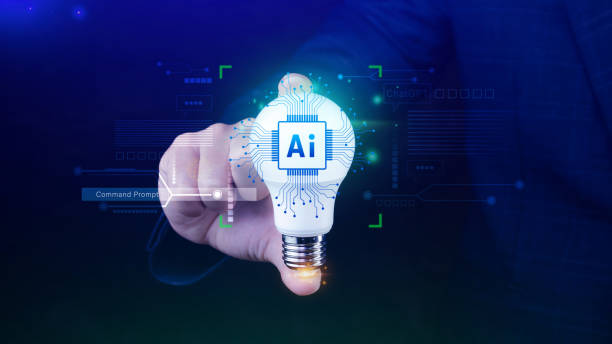
#AI Robot, or Artificial Intelligence Robot, is a combination of robotics and artificial intelligence.
These robots are not only capable of performing physical tasks but can also learn, make decisions, and interact with their environment through AI algorithms.
An AI robot uses sensors to collect information from its environment and processes this information through machine learning algorithms.
This processing allows the robot to recognize patterns, make predictions, and act based on them.
In other words, an AI robot attempts to mimic human cognitive abilities and assist humans in various tasks.
AI robots are employed in diverse fields such as industry, medicine, customer services, and even education, and their role is expected to become more prominent in the future.
The main components of an AI robot include sensors for receiving information from the environment, processors for information processing and algorithm execution, actuators for performing physical tasks, and artificial intelligence algorithms for learning and decision-making.
These robots can operate autonomously or be controlled by humans.
AI robots have attracted significant attention from many industries due to their ability to perform repetitive and dangerous tasks, increase productivity, and reduce costs.
For more information, you can refer to this link about Artificial Intelligence on Wikipedia.
Did you know that your company’s website is the first point of contact for 75% of potential customers?
Your website is the face of your brand. With **Rasaweb** corporate website design services, build an online presence that earns customer trust.
✅ Create a professional and lasting image for your brand
✅ Attract target customers and increase online credibility
⚡ Get a free consultation from **Rasaweb** experts!
Diverse Applications of AI Robots in Various Industries
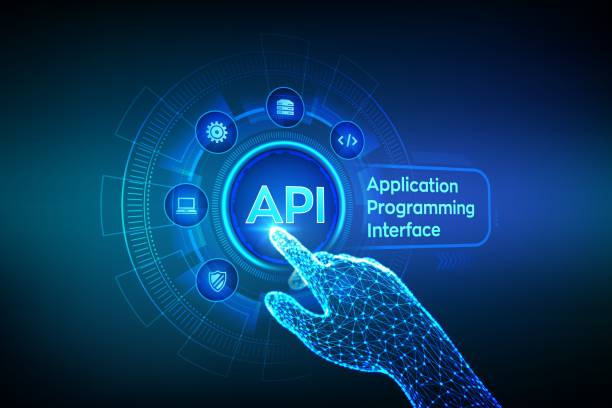
AI robots are rapidly penetrating various industries and playing multiple roles.
In the manufacturing industry, AI robots can be used for repetitive and precise tasks such as assembling components, quality inspection, and packaging.
These robots help increase production speed, reduce errors, and improve product quality.
In the medical field, surgical robots can perform complex operations with high precision, nurse robots can assist in patient care, and pharmacy robots can automatically dispense medications.
AI robots also have numerous applications in customer service.
Chatbots can answer customer questions, solve their problems, and provide them with the necessary information.
In the field of education, teacher robots can help students learn various subjects, correct exercises, and provide feedback.
AI robots are even used in agriculture for harvesting crops, spraying pesticides, and irrigation.
These robots, using sensors and AI algorithms, can help optimize agricultural processes and increase productivity.
For more information on the applications of robotics in industry, you can refer to this article.
Advantages and Disadvantages of Using AI Robots
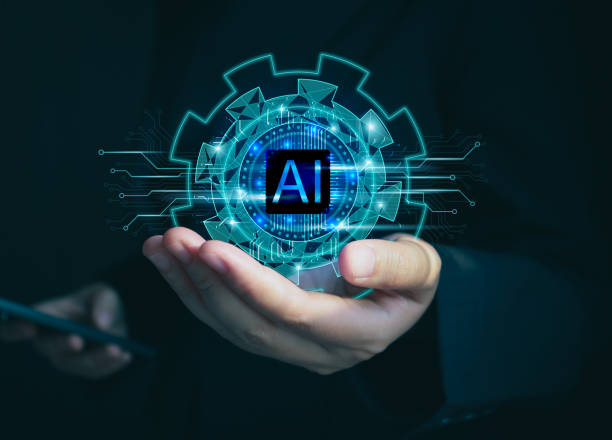
The use of AI robots offers many advantages, including increased productivity, reduced costs, improved quality, and enhanced safety.
AI robots can work 24 hours a day without needing rest, which leads to a significant increase in productivity.
Moreover, these robots can perform dangerous and repetitive tasks, thereby reducing life and financial risks.
However, the use of AI robots also has disadvantages, such as high purchase and maintenance costs, the need for technical expertise for setup and maintenance, and concerns about job loss.
AI robots can replace human labor, which may lead to an increase in unemployment rates.
Additionally, AI robots may be vulnerable to cyberattacks and compromise sensitive information.
Therefore, it is necessary to carefully examine the advantages and disadvantages before using AI robots and take the necessary measures to reduce potential risks.
Here is a table comparing some of the advantages and disadvantages of using AI robots:
| Advantages | Disadvantages |
|---|---|
| Increased Productivity | High Cost |
| Reduced Costs | Need for Technical Expertise |
| Improved Quality | Concerns about Job Loss |
| Enhanced Safety | Vulnerability to Cyberattacks |
Different Types of AI Robots
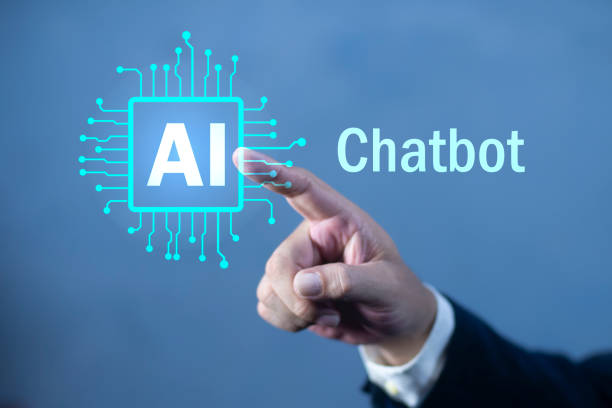
AI robots exist in various types, each designed for specific applications.
Industrial robots are typically used for repetitive and heavy tasks in production lines.
These robots have high precision and speed and can help increase productivity.
Service robots are used to provide customer services in various environments such as hotels, restaurants, and hospitals.
These robots can greet customers, take orders, and provide them with necessary information.
In the medical field, surgical robots can perform complex operations with high precision, nurse robots can assist in patient care, and pharmacy robots can automatically dispense medications.
Educational robots are used to help students learn various subjects.
These robots can correct exercises, provide feedback, and answer students’ questions.
AI robots in the military are used for dangerous tasks such as bomb disposal, mine detection, and border surveillance.
These robots can help save soldiers’ lives and reduce life-threatening risks.
Are you worried about losing customers because you don’t have a professional e-commerce website?
With e-commerce website design by Rasaweb, forget these worries!
✅ Significant increase in sales and visitor-to-customer conversion rate
✅ Professional and user-friendly design that builds customer trust
⚡ Get a free consultation from Rasaweb
The Future of AI Robots: Prospects and Challenges

The future of AI robots looks very bright and promising.
With advancements in AI and robotics technologies, AI robots are expected to become capable of performing more complex tasks and play a more prominent role in our lives.
AI robots can bring about transformations in various fields such as healthcare, transportation, education, and manufacturing in the future.
However, the development of AI robots also comes with challenges.
One of the most important challenges is the concerns regarding the ethics and safety of AI robots.
It is necessary to ensure that AI robots are designed and programmed to act in the best interest of humans and avoid harming them.
Another challenge is concerns about job displacement.
With the increasing use of AI robots, many jobs may be eliminated, which could lead to an increase in unemployment rates.
Therefore, policies must be adopted to help workers learn new skills and prepare for new jobs.
To stay informed about the latest news in the world of robotics, click here.
How to Build an AI Robot?
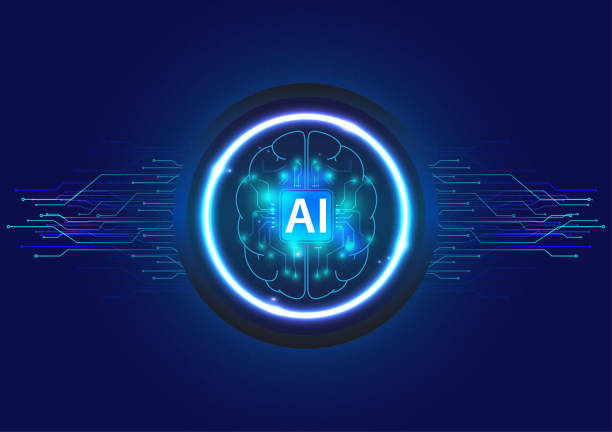
Building an AI robot is a complex process that requires knowledge and expertise in various fields, including robotics, artificial intelligence, programming, and electronics.
The first step in building an AI robot is to define the robot’s purpose and application.
It must be determined what tasks the robot will perform and in what environment it will operate.
After defining the purpose and application, the necessary parts and components for building the robot must be acquired.
These parts include sensors, processors, actuators, and a power source.
Also, the necessary software for programming and controlling the robot must be obtained.
After acquiring the parts and software, the robot must be assembled, and the necessary software installed.
Then, the robot must be programmed to perform the desired tasks.
AI robot programming is typically done using programming languages such as Python, C++, and Java.
After programming, the robot must be tested to ensure it functions correctly.
If there are any issues, the programs must be edited, and the robot tested again.
Here is a table showing the general steps for building an AI robot:
| Step | Description |
|---|---|
| Define Purpose and Application | Specify the robot’s tasks and working environment |
| Acquire Parts and Software | Obtain sensors, processors, actuators, and necessary software |
| Assemble Robot | Connect components and install software |
| Program Robot | Write code to perform tasks |
| Test Robot | Check performance and troubleshoot |
Machine Learning and Its Role in AI Robots
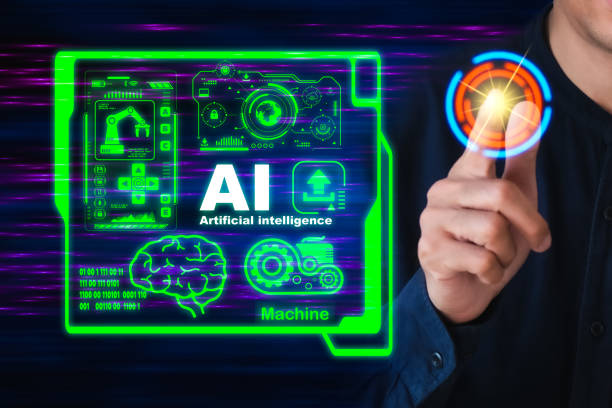
Machine Learning is a subfield of artificial intelligence that allows robots to learn from data and improve their performance without explicit programming.
Using machine learning algorithms, AI robots can recognize patterns in data, make predictions, and make decisions.
Machine learning plays a very important role in AI robots, enabling them to perform well in complex and unpredictable environments.
There are various types of machine learning algorithms, including Supervised Learning, Unsupervised Learning, and Reinforcement Learning.
Each of these algorithms is suitable for specific applications.
For example, supervised learning is used for classification and prediction, unsupervised learning is used for clustering and dimensionality reduction, and reinforcement learning is used to train robots to perform specific tasks.
AI robots will be able to have more intelligent interactions with humans thanks to machine learning.
Ethical Challenges in AI Robot Development
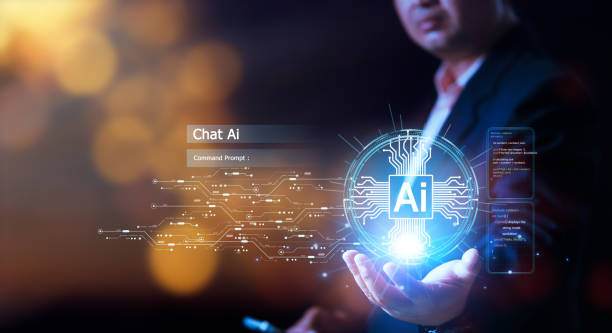
The development of AI robots brings several ethical challenges.
One of the most important challenges is the issue of accountability.
If an AI robot makes a mistake and causes damage, who will be responsible? Is it the robot’s manufacturer, programmer, or user? Another challenge is the issue of privacy.
AI robots usually collect a lot of information from users, and this information can be used for various purposes.
It is necessary to ensure that user information is kept secure and confidential and is not used for unauthorized purposes.
The third challenge is the issue of discrimination.
AI robots may act discriminatorily due to bias in training data.
It is necessary to ensure that training data is fair and unbiased and that AI robots are designed to prevent discrimination.
AI robots must be developed in a way that respects human rights and values and benefits society.
For more information on AI challenges, refer to this site.
Does your current e-commerce website design lead to losing customers and sales?
Rasaweb is your solution with modern and user-friendly e-commerce website designs!
✅ Significant increase in conversion rates and sales
✅ Creation of strong branding and building customer trust
⚡ Get a free e-commerce website design consultation from Rasaweb!
Difference Between AI Robots and Traditional Robots

The main difference between AI robots and traditional robots lies in their ability to learn and make decisions.
Traditional robots operate based on pre-programmed instructions and are unable to change their behavior in response to environmental changes.
However, AI robots can learn from data, recognize patterns, and make decisions based on them.
This allows them to perform well in complex and unpredictable environments.
AI robots can perform tasks that were previously only doable by humans.
AI robots can operate independently and do not require constant human supervision.
For this reason, AI robots are replacing traditional robots in many industries.
Traditional robots are suitable for simple and repetitive tasks, while AI robots are suitable for complex and dynamic tasks.
Important Tips for Choosing the Right AI Robot

Choosing the right AI robot depends on your needs and goals.
Before purchasing an AI robot, you should carefully consider what tasks the robot can perform, what features it has, and its price.
Also, you should pay attention to the robot’s manufacturer and its track record.
A reputable and experienced manufacturer usually produces higher-quality robots and provides better support services.
Furthermore, you should consider the opinions and feedback of other users.
User reviews can help you understand the robot’s strengths and weaknesses and make a better decision.
An AI robot can be a valuable investment, but an incorrect choice can lead to wasted money and time.
So, decide with care and research.
Frequently Asked Questions
| Row | Question | Answer |
|---|---|---|
| 1 | What is an AI robot? | An AI robot is a machine capable of understanding, reasoning, learning, and problem-solving, and can perform complex tasks with relative autonomy. |
| 2 | What are the most important applications of AI robots? | Primary applications include industrial manufacturing, customer service (chatbots), medicine and surgery, autonomous transportation, space exploration, and military affairs. |
| 3 | What is the main difference between an AI robot and a regular robot? | A regular robot only follows pre-programmed instructions, while an AI robot can learn from data, make decisions, and adapt to new environments. |
| 4 | How do AI robots learn? | They learn through machine learning algorithms (such as deep learning, reinforcement learning) and by processing vast amounts of data, identifying patterns, and improving their performance. |
| 5 | Can AI robots have emotions? | Currently, AI robots do not have real emotions in the human sense. They can mimic or recognize emotions, but they do not understand or experience them. |
| 6 | What are the current limitations of AI robots? | Limitations include the need for large amounts of data, inability to understand abstract concepts, lack of true creativity, ethical issues, and generalization challenges in new environments. |
| 7 | What is the role of AI in the development of humanoid robots? | AI helps humanoid robots walk, maintain balance, perceive their surroundings, interact with humans, and perform complex tasks. |
| 8 | How is the future of AI robots predicted? | It is predicted that AI robots will become smarter, more autonomous, and capable of performing more complex tasks in daily life and industry, and their interaction with humans will increase. |
| 9 | Can AI robots replace all human jobs? | It is unlikely that all human jobs will be replaced. Robots will take over many repetitive and dangerous tasks, but jobs requiring creativity, empathy, and ethical judgment will remain. |
| 10 | What ethical and social challenges arise with the expansion of AI robots? | Challenges include issues related to privacy, data security, ethical decision-making by robots, impact on employment, and accountability in case of errors. |
And other advertising services from Rasaweb Advertising Agency:
- Smart UI/UX: A new service to increase user interaction through SEO-driven content strategy.
- Smart Data Analysis: A combination of creativity and technology for digital branding through custom programming.
- Smart Google Ads: A combination of creativity and technology to increase click-through rates through custom programming.
- Smart Customer Journey Map: A new service for enhancing digital branding through intelligent data analysis.
- Smart Custom Software: A professional solution for analyzing customer behavior with a focus on custom programming.
And over a hundred other services in the field of internet advertising, advertising consultation, and organizational solutions.
Internet Advertising | Advertising Strategy | Advertorials
Sources
Comprehensive Guide to Robotics and AI on Zoomit Everything About AI Robots in Digikala Magazine The Future of AI Robots from Tasnim’s Perspective Applications of AI Robots in ISNA News Agency
🚀 Transform your business in the digital world with Rasaweb Afarin Digital Marketing Agency and achieve your grand goals. We pave your path to success by providing services such as professional website design, SEO, and content marketing.
📍 Tehran, Mirdamad Street, next to Bank Markazi, Kazeroun South Alley, Ramin Alley, No. 6

